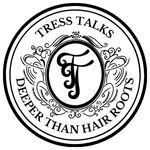In today’s world, where appearances play a significant role, healthy and lustrous hair is highly coveted. However, maintaining the health of our hair can be a challenge due to various factors such as pollution, heat styling, chemical treatments, and even our own daily habits.
To help you achieve and maintain healthy hair, this article will provide valuable tips and tricks for an effective hair care routine.
Understanding Hair Types and Needs
Before diving into the specifics of hair care, it’s important to understand that different hair types have distinct needs. From straight to wavy, curly to coily, and thin to thick, each hair type requires specific care to ensure optimal health and vitality.
Knowing your hair type will help you choose the right products and techniques for your hair care routine. There are several different types of hair, each with its own characteristics. Here are the main types of hair:
Straight Hair: This type of hair is naturally straight, lacking significant curls or waves. It tends to be shiny and reflects light easily.
Wavy Hair: Wavy hair has a slight bend or wave pattern. It falls between straight and curly hair, with loose, relaxed waves.
Curly Hair: Curly hair forms defined curls or spirals. It can range from loose curls to tight, springy coils. Curly hair tends to be prone to frizz and can be more challenging to manage.
Coily Hair: Coily hair, also known as kinky or afro-textured hair, has tight, densely packed curls or coils. It has a natural zig-zag pattern and can be prone to dryness and shrinkage.
Fine Hair: Fine hair refers to the thickness or diameter of each individual strand. It is characterized by thin strands that can be more delicate and prone to breakage.
Medium Hair: Medium hair falls between fine and coarse hair. It is neither too thin nor too thick and is often considered the most versatile hair type.
Coarse Hair: Coarse hair has a larger diameter and feels thicker and more robust to the touch. It is often more resistant to styling and can require extra moisture to maintain its health.
It’s important to note that many individuals may have a combination of hair types or experience changes in their hair texture over time due to various factors such as hormonal changes, aging, and chemical treatments. Understanding your specific hair type can help you tailor your hair care routine accordingly for optimal results.
Cleansing and Conditioning
The foundation of any hair care routine lies in proper cleansing and conditioning. Here are some essential tips:
- Shampooing: Choose a shampoo that suits your hair type and scalp condition. Avoid sulfates and opt for gentle, sulfate-free formulas. Massage the shampoo into your scalp using your fingertips, and rinse thoroughly to remove any residue.
- Conditioning: After shampooing, apply a conditioner that matches your hair type. Focus on the mid-lengths and ends of your hair, as they tend to be drier. Leave the conditioner on for a few minutes before rinsing to allow it to deeply nourish your hair.
Moisture and Hydration
Moisture and hydration are crucial for maintaining healthy hair. Consider the following tips:
- Deep Conditioning Treatments: Incorporate deep conditioning treatments into your routine once or twice a month. Look for products that contain ingredients like shea butter, argan oil, or coconut oil, which help restore moisture and nourish the hair.
- Regular Moisturizing: Use leave-in conditioners or hair oils to provide ongoing moisture to your hair. Apply these products sparingly to avoid weighing down your hair.
Heat Styling and Protection
Excessive heat styling can lead to damage and breakage. Follow these suggestions to minimize harm:
- Heat Protectant: Prior to using any hot tools, apply a heat protectant spray or serum to create a barrier between your hair and the heat. This helps reduce the risk of heat damage.
- Lower Heat Settings: When using styling tools like hair dryers, straighteners, or curling irons, opt for lower heat settings to minimize the potential damage to your hair.
Diet and Lifestyle
A balanced diet and a healthy lifestyle contribute significantly to the overall health of your hair. Consider the following:
- Nutrient-Rich Foods: Include foods rich in vitamins A, C, E, and biotin in your diet. These nutrients promote hair growth and strengthen the hair follicles. Examples include fruits, vegetables, nuts, and lean proteins.
- Hydration and Exercise: Drink plenty of water to keep your body and hair hydrated. Regular exercise promotes good blood circulation, which nourishes the hair follicles.
Conclusion
Maintaining healthy hair requires consistent effort and a well-rounded hair care routine. By understanding your hair type and needs, practicing proper cleansing and conditioning techniques, prioritizing moisture and hydration, protecting against heat damage, and adopting a healthy diet and lifestyle, you can achieve the luscious, healthy hair you desire.
Remember, patience and consistency are key, as healthy hair is a journey that requires ongoing care and attention. So, embrace these tips and tricks, and enjoy the rewards of your beautiful, healthy tresses.
